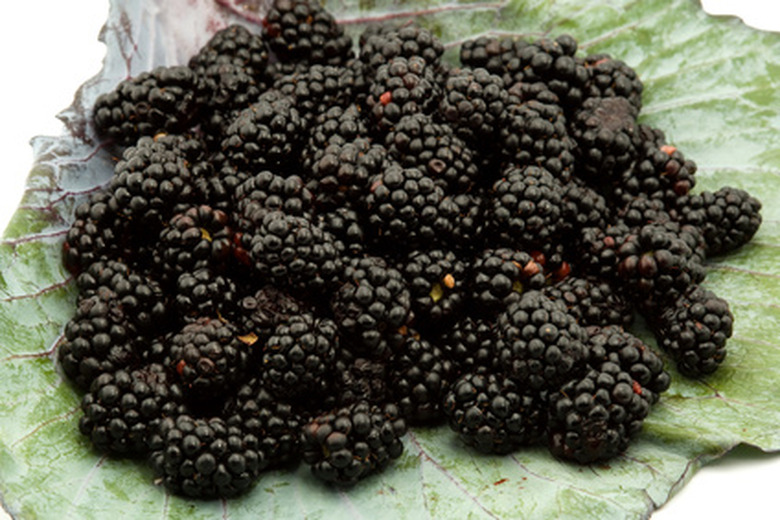How To Grow Blackberries In Central Texas
Things Needed
- Soil pH test
- Ground rock sulfur
- Organic compost
- Tiller
- Water
- Bucket
- Shovel
- Mulch
- 10-10-10 fertilizer
- Pruning clipper
The blackberry is a biennial bramble plant that grows berries on 2-year-old canes. Blackberry plants grow well in Central Texas gardens that have a U.S. Department of Agriculture growing zone of 5 through 8. The southern tip of Texas is too hot and dry for many varieties of blackberries. The plants will being producing fruit three years after planting and are productive for approximately eight years before requiring plant replacement. Blackberry plants grow best in a well-draining sandy soil with adequate water supplements during the growing season.
Step 1
Select a planting location that has a well-draining, nutrient-rich soil and full sunlight conditions for the blackberry plants. Full morning sunlight is preferred over the hot afternoon sun. Air flow through the planting area should not be blocked by buildings or large structures as air circulation is required for disease prevention.
- The blackberry is a biennial bramble plant that grows berries on 2-year-old canes.
- Air flow through the planting area should not be blocked by buildings or large structures as air circulation is required for disease prevention.
Step 2
Prepare the planting soil the growing season prior to planting. Remove weeds from the area, and test the soil to verify that the pH is 5.5 to 7.0. Work ground rock sulfur into the soil to lower the pH number if needed.
Step 3
Add a 2- to 3-inch layer of organic compost to the planting area to increase the nutrient value and moisture retention ability of the soil. Work the compost into the soil with a tiller to the depth of 8 to 10 inches.
Step 4
Soak the roots of 1-year-old bare root canes by placing them in a bucket of warm water for several hours. Place the plants in a hole that is wide enough to spread the roots out and the same depth as the cane was previously grown. Gently cover the roots and pack the soil to hold the canes in place. Space the canes 2 to 3 feet apart in rows that are 8 feet apart.
- Prepare the planting soil the growing season prior to planting.
- Place the plants in a hole that is wide enough to spread the roots out and the same depth as the cane was previously grown.
Step 5
Water the canes generously after planting by soaking the ground. Do not overhead water the canes as wet plants are susceptible to fungal diseases. Water the canes weekly with 1 inch of water during the spring season. Increase the water amount so each plant receives 2 gallons of water daily during the fruit production season. Decrease the water amount after harvest is complete.
Step 6
Apply a 3-inch layer of mulch around the blackberry canes to assist with moisture retention. Refresh the mulch each year in the spring season to maintain a 3-inch layer.
- Water the canes generously after planting by soaking the ground.
- Water the canes weekly with 1 inch of water during the spring season.
Step 7
Fertilize blackberry plants four weeks after planting by applying a 10-10-10 fertilizer once the canes shows signs of growth. Fertilize the plants each year in spring before flower buds appear on the canes.
Step 8
Prune the blackberry canes be removing damaged and dead canes each spring. Top the canes in summer by pruning 3 inches off the top to stimulate new growth. Prune 2-year-old fruiting canes after harvest by cutting them off close to ground level.
Tip
Recommended blackberry varieties for Central Texas gardens are: Brazos, Rosborough, Womack, Shawnee, Choctaw, Brison, Arapaho, Navaho and Hull.
